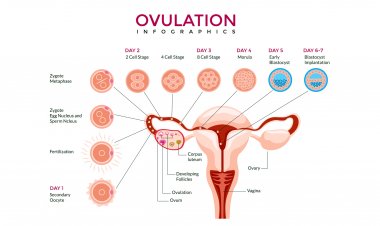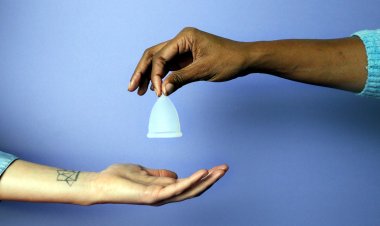Know what is IVF and how IVF procedure is done
The feeling of becoming a mother is very special for all women. It is said that when a woman becomes a mother, it is like a new life for her, but if she is not able to become a mother due to some reason, it is like a deficiency. If you are not able to become a mother due to any reason or you are childless, in that case, you can use IVF treatment. Today, with the help of IVF, many couples are easily able to become parents.

Due to the busy life and lifestyle of today, both men and women suffer from infertility and as a result, infertility becomes the biggest problem of their life.
Science has developed a lot in the medical field, as a result, today we can use many techniques to meet the various shortcomings of our life. IVF treatment is one of those technological developments. Now you must be thinking that what is IVF treatment and how can it help you in becoming a mother? With the help of this article, we will tell you how this process happens and what causes infertility?
What is IVF?
In vitro fertilization treatment is called IVF treatment. Earlier it was known as "test-tube baby". This process was first used in 1978 in England. IVF treatment involves mixing a woman's eggs and a man's sperm under certain controlled conditions in the laboratory. Once the embryo is formed, it is placed back into the woman's uterus. Although IVF is a complex and costly procedure, it is very helpful for couples who have been preparing for pregnancy for a long time or have failed other fertility treatments for some reason. Let us know why, how, and in how many steps the IVF process takes place?
Why is the IVF procedure done?
If you are struggling with infertility, you can choose any fertility treatment in consultation with your doctor. If your doctor recommends you to go for IVF, then it could be for the following reasons:
- in case of low sperm count
- Problems with ovulation due to conditions like PCOD
- problems with the fallopian tubes
- If either of the couples has had a vasectomy
- endometriosis
- After other fertility treatments have failed
Apart from this, you can also use donor sperm or donor egg for the IVF process. This type of procedure is beneficial for couples who are suffering from some kind of serious genetic disorder and do not want that disorder in their children.
Also, if a woman or a man gets diagnosed with cancer at a young age, even in that case, they can save their healthy eggs or sperm for the future with the help of IVF. This is done because chemotherapy and radiotherapy are used to treat cancer that can harm fertility. After cancer treatment, these eggs or sperm can be used for IVF procedures.
We would like to advise you here that before using any type of procedure, make sure to consult an IVF doctor.
How to choose an IVF center?
If you think that you are the right candidate for IVF then do a careful assessment of any IVF center before going for this procedure, you can visit the IVF center near you and ask the appropriate questions. We have put together some questions here that you can use to know if the IVF center is right for you:
What is your pregnancy ratio per embryo transfer?
- What are your pregnancy rate for our age group and couples with our infertility problems?
- What is the birth rate of couples who do IVF every year here?
- How many of those deliveries are twins or other multiple births?
- What will be the total cost of IVF procedure including the cost of hormone treatment?
- How much does it cost to store embryos and how long can we store them?
- Do you do egg donation too?
How is the IVF procedure done?
Before undergoing an IVF procedure, be sure to consult with your doctor whether you are the right candidate for IVF or not. IVF should be done only as per the instructions of the doctor. This process is completed in several stages which include – Ovarian stimulation, removal of an egg from the woman’s ovary, receiving sperm from the man, fertilization, and embryo transfer in the woman’s womb. One cycle of IVF may take about two to three weeks and may require more than one cycle.
1. Ovarian stimulation
If you are using your own egg during IVF, at the beginning of the IVF cycle your ovary is stimulated to produce multiple eggs, for this, your doctor will start treatment with synthetic hormones. Will do More than one egg is needed because some eggs do not fertilize or develop normally after fertilization.
Your doctor may give you a number of medicines during this procedure. For which your doctor may do several tests to determine which medicines to use and when to use them. Typically, you will need one to two weeks of ovarian stimulation before you are ready to lay eggs. Your doctor may order an ultrasound, blood tests, etc. to know when your eggs can be taken.
2. Egg Removal
The process of removing the egg from the ovary is done right 34 to 36 hours after the woman's ovulation process. This procedure can usually be done in a doctor's office or clinic. You'll be unconscious during this time, and you'll have a transvaginal ultrasound to remove the eggs by inserting a thin needle into your vagina.
Abdominal ultrasound may be used to guide the needle if the ovaries are not visible through transvaginal ultrasound. The eggs are separated from the follicles with the help of a needle, and the eggs are removed. Mature eggs are placed in a nutrient liquid and incubated. Eggs that appear healthy and mature will be mixed with sperm in an attempt to form an embryo. However, not all eggs can be fertilized successfully.
3. Taking Sperm
If your partner's sperm is being used, this procedure can be done at your doctor's office or in a clinic. For this, with the help of masturbation, sperm is given to the doctor for the IVF process. Apart from this, sperm can also be given with the help of the testicular aspiration process. After giving the sperm, the doctor will separate the sperm from the sperm fluid in the lab.
4. Fertilization
The fertilization process can generally be done using two methods:
Conventional Insemination: During conventional insemination, healthy sperm and mature eggs are mixed together and incubated overnight.
Intracytoplasmic sperm injection (ICSI): In ICSI, healthy sperm is injected directly into each mature egg. ICSI is often used when there is a problem with sperm quality or quantity or if fertilization attempts fail during the first IVF cycle.
5. Embryo Transfer in the Womb
Embryo transfer is done in your doctor's office or clinic and usually takes place two to five days after the egg is taken. You may be given a mild pain reliever. The procedure is usually painless, although you may experience slight cramping. The doctor will then insert a long, thin, flexible tube, called a catheter, into your vagina, through your cervix, and into your uterus. In a catheter, one or more embryos are placed through it into your uterus.
After embryo transfer, you can resume normal daily activities. However, your ovaries may still be slightly enlarged, so be sure to consider avoiding any unusual movements. Apart from this, in some cases you may face the following problems:
- You may have some bloody fluid coming out of your cervix soon after the procedure.
- It may be experienced in the breast due to high estrogen levels
- flatulence experience
- mild cramping
- constipation problem
If you feel slight or severe pain after embryo transfer, contact your doctor immediately. He or she will check you for any type of infection such as ovarian torsion and complications of severe ovarian hyperstimulation syndrome.

 mybabycare
mybabycare 















